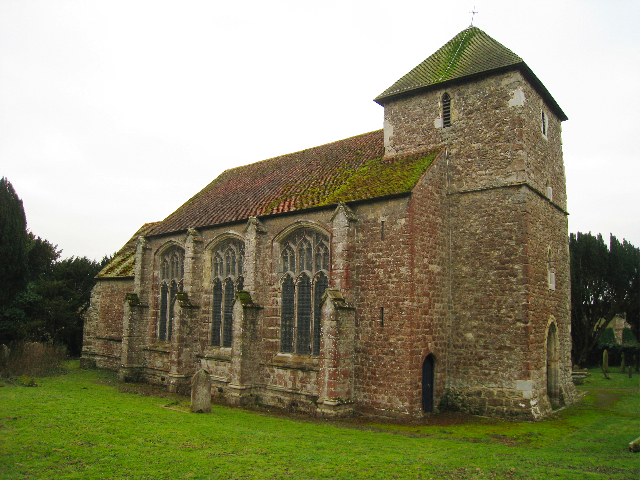Warrant Officer Richmond Blumer

Richmond Anthony Blumer was born on 19th April 1921 and came from New South Wales, Australia. He was known as "Tony" by his family and later as "Red" by his colleagues.
Tony had a passion for motor cycles and when war was declared in 1939 he became a dispatch rider for the Militia. He later joined the Royal Australian Air Force in search of action and he performed well during his pilot training at Camp Borden, Ontario, Canada. However, near the end of his training Tony had a bet that he could fly his plane between two grain silos near the airfield. During his first attempt at this a wing tip was knocked off. He was certain that he would succeed in flying the aircraft between the silos but was mistaken, with the result that the plane crashed and was wrecked and the other crewman was seriously injured. Because of this Tony was denied a commission and was retained at Camp Borden for a year as a Staff Pilot. He did not, therefore, arrive in England until 1943.
Once in England Tony was sent for operational training and was then posted to 91 (Nigeria) Squadron based at RAF Westhampnett in Sussex. 91 Squadron was part of the Tangmere Wing which flew the Spitfire XII, the duties of which were mainly "Ramrods" (bomber escorts), "Rodeos" (fighter sweeps) and "Rhubarbs" (attacks on ground targets).
Tony flew a number of missions with ‘A’ Flight and in September 1943 Tangmere Wing was transferred to Lympne in Kent where they were to be involved in shipping controls. However, bomber escort work dominated the time.
Shortly afterwards Tony was able to claim a kill when he shot down a Focke Wulf over Lille in France but only days later was forced to bale out of his plane into the sea near Deal when it developed engine problems following a furious dogfight. Luckily he was rescued very quickly and found to be unhurt.
91 (Nigeria) Squadron was then transferred to RAF Tangmere in Sussex where Tony took part in Rodeos and Rhubarbs. It was during a fighter sweep over the Beaumont/Bernay areas of France that four enemy aircraft were destroyed including a Bf 109G by Tony himself.
On 6th November 1943 Tony flew on a Rhubarb over northern France where a number of railway locomotives were detroyed. During this attack Tony’s aircraft was hit and was last seen climbing into cloud with black smoke pouring from the engine. He was subsequently posted "missing" and nothing was heard of him until May 1944 when he turned up completely unexpectedly at the Squadron’s new headquarters at RAF West Malling. It transpired that after Tony had been shot down over northern France he had been found by members of the local resistance movement and hidden by them before escaping into Switzerland. He was then forced to recross the border into France to avoid being interned. Here again he made contact with the Resistance and it was agreed that this time, with their assistance, he would escape through the South of France and Spain. However, it was felt sure that this plan would fail because of the fact that Tony had a ruddy complexion and bright golden hair and would therefore not blend in with the local population. The problem was easily solved by him having his hair dyed black. Having crossed the Pyrenees Tony was arrested but escaped and managed to return to England via Gibraltar.
Tony rejoined his squadron three days after arriving in England but had not fully recovered from his ordeal. In June 1944 he started flying operationally again and was involved in the shooting down of V-1 Flying Bombs.
On 25th June flying had to be curtailed for most of the day due to bad weather conditions. Tony Blumer took part in the last patrol of that day when a flying bomb was destroyed between Tenterden and Ashford. After the patrol turned for home Tony landed at the Advanced Landing Ground at Staplehurst to refuel. He took off again in poor weather for his return to West Malling but sadly, just over a mile short of the runway his aircraft dived straight into the ground and Tony was killed. He was 23 years old. Tony was buried in Brookwood Cemetery in Surrey.
Although local people were aware of the death of a Spitfire Pilot in Nettlestead Green during the Second World War, a number of them having been eyewitnesses, it was not until 1992 that further investigations were made by aviation archaeologists. They were given permission by Roy Tucker, a local landowner, to excavate the site of the crash where they found items such as a flying helmet, fragments of uniform, seat harness, watch and coins which were subsequently taken away for cleaning and conservation.
Investigations revealed that the pilot had been Tony Blumer and permission was given to the archaeologists to erect a memorial in his honour. On the 50th anniversary of Tony’s death, 25th June 1994, the memorial was dedicated by the Rev. Alison Leigh, then Rector of Nettlestead, during a short service.
Reproduced with many thanks to the Fly Past Magazine – www.flypast.com
We hope to hold a service of commemoration for his life when circumstances allow. The Australian High Commission normally send an officer of the Royal Australian Air Force to the service to represent the High Commissioner and that on one occasion the High Commissioner himself attended. The Parish Council were instrumental in having the new houses at Blumer Lock named after him.